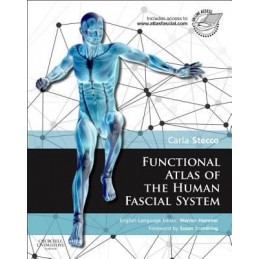- Reduced price

Order to parcel locker

easy pay


 Delivery policy
Delivery policy
Choose Paczkomat Inpost, Orlen Paczka, DHL, DPD or Poczta Polska. Click for more details
 Security policy
Security policy
Pay with a quick bank transfer, payment card or cash on delivery. Click for more details
 Return policy
Return policy
If you are a consumer, you can return the goods within 14 days. Click for more details
Principally based on dissections of hundreds of un-embalmed human cadavers over the past decade, Functional Atlas of the Human Fascial System presents a new vision of the human fascial system using anatomical and histological photographs along with microscopic analysis and biomechanical evaluation.
Prof. Carla Stecco - orthopaedic surgeon and professor of anatomy and sport activities - brings together the research of a multi-specialist team of researchers and clinicians consisting of anatomists, biomechanical engineers, physiotherapists, osteopaths and plastic surgeons. In this Atlas Prof. Stecco presents for the first time a global view of fasciae and the actual connections that describe the myofascial kinetic chains. These descriptions help to explain how fascia plays a part in myofascial dysfunction and disease as well as how it may alter muscle function and disturb proprioceptive input. Prof. Stecco also highlights the continuity of the fascial planes, explaining the function of the fasciae and their connection between muscles, nerves and blood vessels. This understanding will help guide the practitioner in selecting the proper technique for a specific fascial problem with a view to enhancing manual therapy methods.
Functional Atlas of the Human Fascial System opens with the first chapter classifying connective tissue and explaining its composition in terms of percentages of fibres, cells and extracellular matrix. The second chapter goes on to describe the general characteristics of the superficial fascia from a macroscopic and microscopic point of view; while the third analyzes the deep fascia in the same manner. The subsequent five chapters describe the fasciae from a topographical perspective. In this part of the Atlas, common anatomical terminology is used throughout to refer to the various fasciae but it also stresses the continuity of fasciae between the different bodily regions.
Data sheet
1 Connective tissues
2 Subcutaneous tissue and superficial fascia
3 Deep fasciae
4 Fasciae of the head and neck
5 Fasciae of thorax and abdomen
6 Fasciae of the back
7 Fasciae of the upper limb
8 Fasciae of the lower limb
Reference: 61089
Author: Lynn S. Bickley
Reference: 44415
Author: Shirley Sahrmann
Reference: 12527
Author: Leon Chaitow
Reference: 13343
Author: Leon Chaitow
Reference: 11848
Author: Meridel I. Gatterman
Reference: 12918
Author: Zbigniew Śliwiński
